 Cash flow management refers to the careful tracking and balancing of money moving in and out of a business. It helps ensure that the business can cover its expenses and financial obligations. Employing specialized tools, such as software applications, aids in this process. These tools enable businesses to predict future cash availability, monitor expenditures, and identify potential financial challenges. This, in turn, facilitates informed decision-making and strategic planning to uphold the business’s financial well-being and foster growth. In this article, we will answer your question, “What tool do most small business owners use to manage their companies cash flow?”
Cash flow management refers to the careful tracking and balancing of money moving in and out of a business. It helps ensure that the business can cover its expenses and financial obligations. Employing specialized tools, such as software applications, aids in this process. These tools enable businesses to predict future cash availability, monitor expenditures, and identify potential financial challenges. This, in turn, facilitates informed decision-making and strategic planning to uphold the business’s financial well-being and foster growth. In this article, we will answer your question, “What tool do most small business owners use to manage their companies cash flow?”
What is cash flow management?
Cash flow management involves keeping a close watch on the money that flows into and out of a business. It’s like monitoring the movement of funds to make sure there’s enough money to pay for various needs and expenses. Imagine it as keeping a balanced scale. You want the money coming in to be more or at least equal to the money going out.
To make this process smoother, businesses use tools, often computer programs, that help organize and predict how money will behave. These tools can anticipate how much money will be available in the future, keep track of where the money is being spent, and spot any potential financial issues early on. By using these tools, businesses can make smart choices about when to spend, when to save, and how to ensure they’re in a strong financial position.
You might also like: Top 7 Common Types of Business Software
Why is cash management important?
Cash management is crucial for businesses because it ensures they have the necessary funds to operate smoothly. It involves overseeing the inflow and outflow of money to cover expenses, investments, and obligations. Effective cash management prevents situations where a business might face cash shortages, struggle to pay bills or miss out on growth opportunities. By carefully monitoring and planning their cash flow, businesses can make informed decisions, remain financially stable, and navigate economic challenges with greater resilience.
What is cash flow management software?
Cash flow management software is a specialized tool designed to help businesses keep track of their finances and manage the movement of money in and out of their operations. This software assists in monitoring incoming and outgoing cash, tracking expenses, and forecasting future cash availability. It often provides visual representations of financial data, like charts and graphs, to make it easier for businesses to understand their cash flow patterns.
Cash flow management software helps automate tasks that would otherwise be time-consuming if done manually. It can generate reports, set alerts for low cash balances, and even predict future cash trends based on historical data. By using this software, businesses can make informed decisions about spending, saving, and investing, ultimately promoting better financial planning and stability.
What’s the difference between cash flow management vs. cash flow forecasting?
Cash flow management and cash flow forecasting are closely related concepts in financial management. However, they focus on different aspects of a business’s financial health.
Cash flow management involves actively monitoring and controlling the movement of money in and out of a business. It’s about ensuring that the business has enough cash on hand to cover its daily operations, expenses, and financial obligations. Cash flow management involves tasks such as tracking inflows and outflows, optimizing the timing of payments, managing receivables and payables, and addressing any shortfalls to maintain liquidity.
On the other hand, cash flow forecasting is a forward-looking process that predicts the future cash inflows and outflows of a business over a specific period, usually weeks or months. Cash flow forecasting relies on historical data, current financial trends, and various assumptions to estimate how much cash the business will have available in the future. It helps businesses anticipate potential cash shortages or surpluses. Enabling them to plan ahead, make informed decisions, and take proactive steps to manage their financial resources effectively.
You might also like: Top 15 Best Software For Your Business in 2023
What tool do most small business owners use to manage their companies cash flow?
Here, we will answer your question, “What tool do most small business owners use to manage their companies cash flow?”
1. Cube
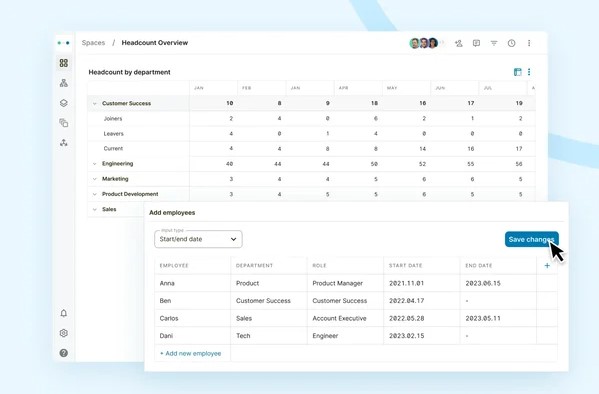
Cube represents a cutting-edge FP&A platform designed to offer dynamic solutions for financial planning. Whether it’s crafting cash flow projections, conducting scenario assessments, or handling various other tasks, Cube serves as a comprehensive answer to streamline all cash management operations within a unified space.
Unique among its peers, this platform seamlessly transfers data from spreadsheets into a multi-dimensional database. All that’s required is linking your key data origins to Cube. The platform’s intelligent mapping then converts this data into a singular, accurate source of information that can be analyzed, shared, and leveraged for valuable insights.
2. Xero
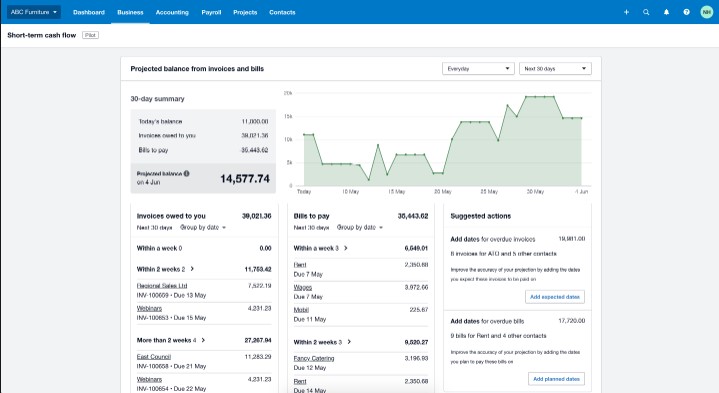
Xero offers user-friendly accounting software tailored for small and medium-sized enterprises (SMEs), incorporating an array of tools for efficient cash flow management. It facilitates tasks such as maintaining current financial records via bank reconciliation, monitoring and settling bills, as well as generating online invoices, and accepting digital payments to offer a transparent glimpse into the business’s cash flows.
Xero automates processes including tax computations, payroll, superannuation contributions, and GST calculations. Additionally, the software empowers users to directly submit payroll information and business activity statements to the tax authorities, streamlining compliance tasks.
3. Vena Solutions
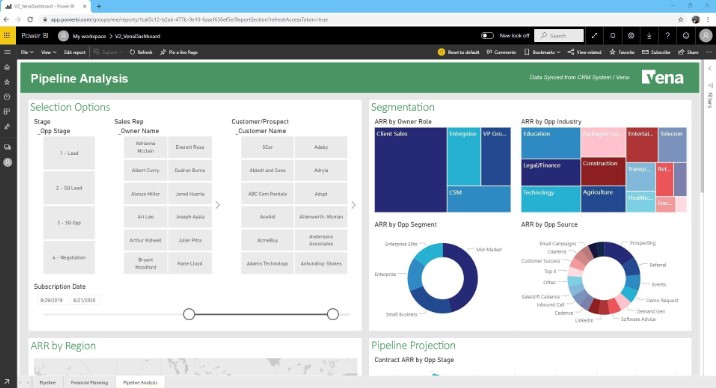
Vena stands as a solution designed to synergize with Microsoft 365 and enhanced by Power Business Intelligence. Offering businesses a cohesive environment to operate, strategize, and expand. Within this ecosystem, Vena’s software for cash flow planning empowers users to craft and execute driver-based models on a daily, weekly, or monthly basis.
Bridging the power of an Excel interface with OLAP cube technology on a unified platform, this setup enables rapid data analysis and the ability to present and consolidate extensive information. Seamlessly integrating and safeguarding business data, Vena facilitates optimized strategic planning by intertwining cash flow management, scenario planning, and thorough what-if analyses.
4. Fathom

Fathom provides practical financial insights by utilizing current cash flow patterns from your recent business financial data. Or your pre-existing budget, aiming to enhance the efficiency of cash flow management.
This tool integrates personalized management reporting and cash flow projection. Employing extensive financial modeling, results in a transparent overview of your business’s performance. Every data point within Fathom’s cash flow forecasts can be carefully scrutinized and verified to uncover the precise sources behind the numerical values.
5. Anchor
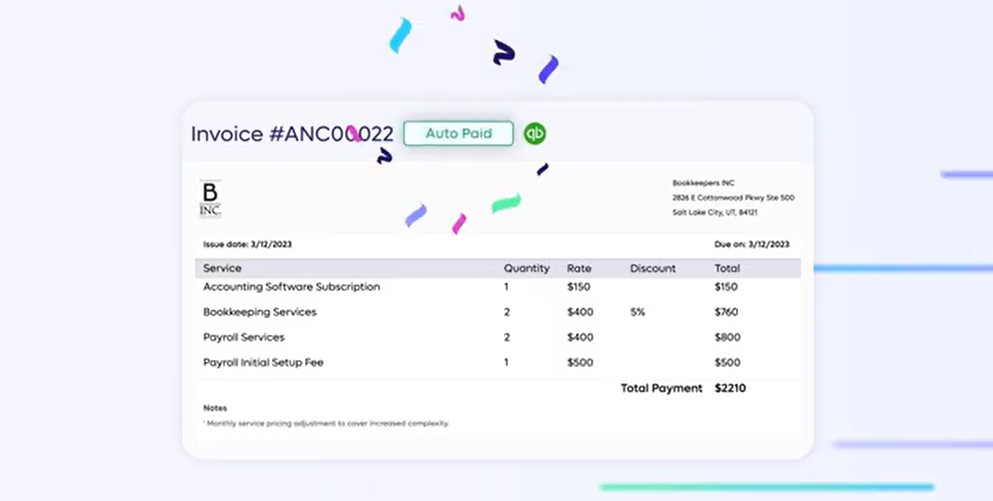
Anchor serves as a cloud-based independent billing system that ensures timely payments for businesses by streamlining B2B billing, collections, and payments through its comprehensive automated billing and collection software. By handling these tasks from start to finish, Anchor removes the need for manual intervention. Reducing the chances of human errors or fraudulent activities in B2B transactions.
Moreover, Anchor takes the entire billing and payment cycle and automates it, commencing from supplier-client agreements all the way to managing invoices, payables, and the reconciliation process. This approach guarantees the prevention of delayed payments and the avoidance of revenue losses.
6. FreshBooks
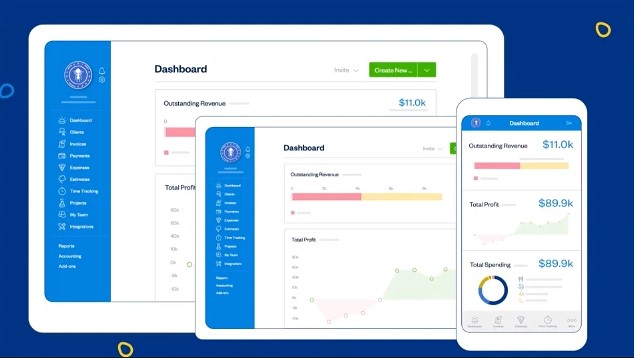
FreshBooks accounting software provides immediate access to essential financial management tools, catering to a wide range of users, from self-employed professionals to growing business proprietors.
Getting started with FreshBooks is effortless. Small businesses just simply sign up, and input their business information, and they are set. The FreshBooks dashboard offers a variety of features to explore. businesses can get access to invoicing functionalities, add clients for billing, opt for credit card payments via FreshBooks Payments, generate accounting reports, utilize project management tools, and more.
7. Odoo Accounting
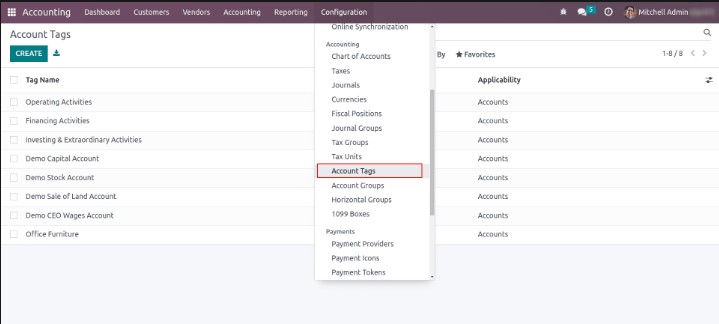
The Odoo Accounting app has a convenient customer portal that integrates with all key payment providers to facilitate rapid payments supported by automated follow-ups for any late payments.
The app automates supplier payables and receivables keeping track of deposits to simplify bank reconciliations and integrates bank feeds automatically from over 15,000 financial institutes predominantly in the United States, Canada, and New Zealand.
8. Planful
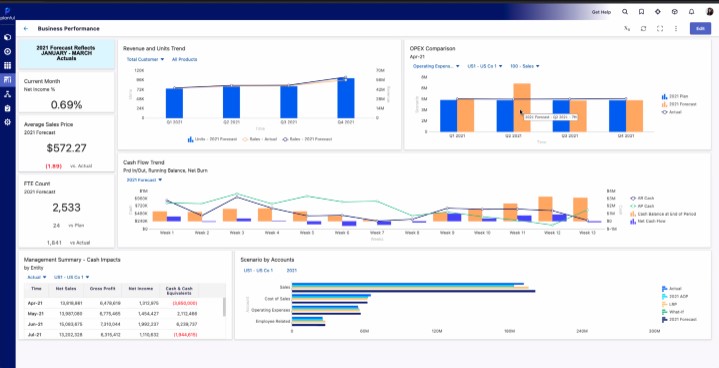
Planful stands as a cloud-based platform for financial planning and analysis, notable for its adoption by major entities such as the Boston Red Sox and TGI Fridays. Renowned for its capabilities in cash flow analysis and ongoing planning, Planful provides a strong solution.
The platform is segmented into structured planning, dynamic planning, consolidation, and reporting components. These facets guide users through the essential stages of financial planning and analysis, enabling a comprehensive view of financials and facilitating well-informed decision-making.
9. QuickBooks

QuickBooks establishes a connection with your bank, credit card, and various payment platforms, offering real-time insights into your business’s progress. It furnishes all the necessary data for effective cash flow management, enhancing credit control measures, and facilitating more informed business choices.
Integrating your business accounts with QuickBooks provides a comprehensive overview of your financial landscape while streamlining the reconciliation of cash and credit. This advantage is amplified by the availability of real-time transaction data, ultimately saving valuable time.
10. Unleashed B2B eCommerce Portal
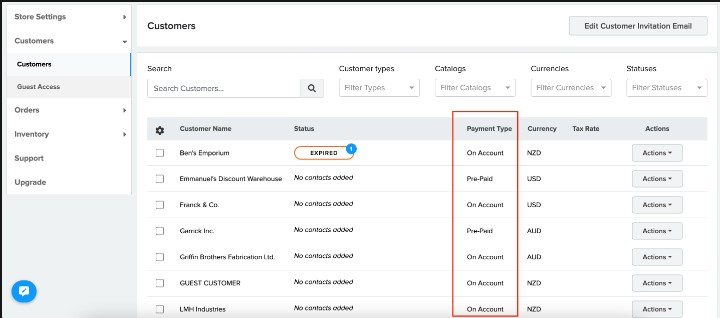
Their proprietary B2B eCommerce portal streamlines the B2B selling journey, leading to cost reduction by eliminating manual processes. As well as potential costly inaccuracies arising from human involvement. This shift away from manual order entry optimizes business procedures, elevating efficiency levels and simplifying transactions.
The platform enhances the purchasing journey for their customers, enabling swift and effortless order placement and tracking. Moreover, organizations have the flexibility to designate B2B sales as ‘pre-payment only,’ thereby minimizing credit risks and bolstering credit control measures.
How do small businesses keep track of expenses?
Small businesses manage expenses through a variety of methods and tools. They often use accounting software to digitally record and categorize expenses. Some rely on manual methods like spreadsheets or physical ledgers while maintaining organized records of receipts and invoices. Regular bank and credit card reconciliations help ensure accuracy. Collaboration with financial professionals and regular financial reviews contribute to effective expense tracking. The specific approach varies based on the business’s needs and available resources.
How do you manage cash flow?
Managing cash flow involves several key practices. First, it’s important to monitor incoming and outgoing funds meticulously, using tools like cash flow forecasting to predict future financial positions. Efficiently managing invoices, payments, and expenses helps ensure a balanced cash flow.
Strategic timing of expenses, like paying bills when they’re due but not before, can optimize cash usage. Maintaining a cash reserve for emergencies is also wise. Regularly reconciling bank statements and updating financial records aids accuracy.
Additionally, effective credit control by managing receivables and setting clear payment terms contributes to stable cash flow. Collaborating with financial professionals and using software tools can simplify and streamline these practices. Regular financial reviews provide insights for making informed decisions.
How to improve cash flow?
Enhancing cash flow involves several strategies. Efficiently managing accounts receivable by promptly collecting payments and setting clear payment terms can accelerate cash inflow. On the expense side, optimizing payment schedules and negotiating better terms with suppliers can extend payment periods and preserve cash.
Monitoring inventory levels and avoiding overstocking minimizes tied-up capital. Offering discounts for early payments can motivate customers to settle invoices promptly. Analyzing and reducing unnecessary expenses also contributes to better cash flow.
Regularly reviewing financial statements and using cash flow forecasting can provide insights for proactive decision-making. Exploring financing options when needed and maintaining an emergency fund help manage unexpected cash needs. Overall, a combination of prudent financial management, streamlined operations, and strategic planning can lead to improved cash flow.
You might also like: Our Top Picks: 9 Best Software Management Books for Optimal Business Success
How do you solve cash flow problems?
To resolve cash flow problems, assess the causes, adjust payment terms, and enhance collections. Cut unnecessary expenses, negotiate supplier terms, and use forecasting for planning. Consider financing options, diversify revenue, and optimize inventory. Seek expert advice and adapt strategies for ongoing improvement.
Conclusion: What tool do most small business owners use to manage their companies cash flow?
Smart cash flow management is the key to keeping businesses strong and growing. By keeping a close eye on the money coming in and going out, companies can tackle hurdles, grab chances, and avoid financial stress. This approach ensures bills are paid on time, lessens the need to borrow, and supports well-planned investments. All in all, handling cash flow well helps businesses stay resilient, adaptable, and on the road to success.
Now that we’ve answered your question, “What tool do most small business owners use to manage their companies cash flow?” you will be able to find the best cash flow management software for your business.





